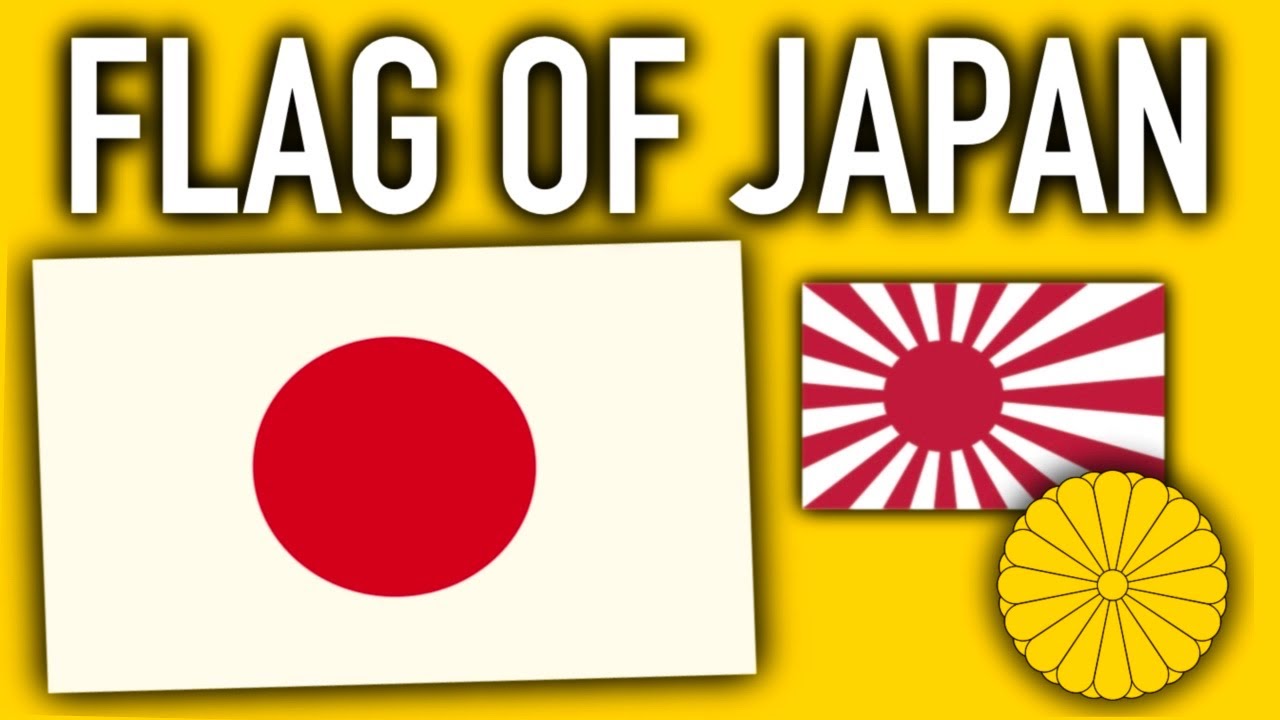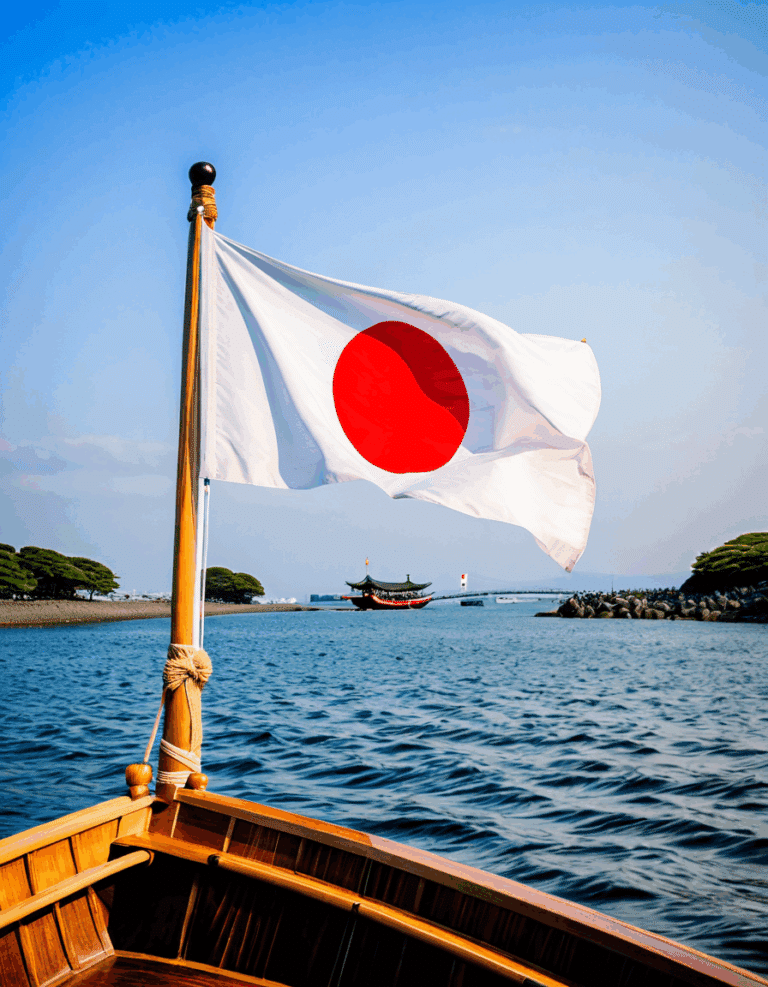The Japanese flag, known as the “Nisshoki” or “Hinomaru,” is more than just a piece of fabric. Its striking design—a bold, red circle symbolizing the sun set against a pure white background—carries deep cultural significance. From its historical roots to its role in contemporary society, the Japanese flag paints a vivid picture of national identity, pride, and unity. With Japan often referred to as the Land of the Rising Sun, this imagery is woven into the very fabric of the nation’s consciousness.

1. The Symbolism of the Japanese Flag
The Japanese flag stands as a testament to Japan’s reverence for nature and spirituality. The red circle represents not only the sun but also life, warmth, and the essence of the country itself. This symbolism draws from Shinto beliefs, where Amaterasu, the sun goddess, is considered one of the most important deities. For centuries, the sun has been a powerful symbol in Japan, connecting the people to their agricultural roots, where the rising sun heralds a new day filled with possibilities.
With an official adoption as a civil flag in 1868, the Japanese flag reflects generations of history. Its simplicity resonates with the philosophy of Zen, where less often means more. The flag’s stark design invites introspection, urging citizens to think deeply about what it means to be Japanese. It’s not just a national emblem; it’s a profound reminder of cultural continuity.
As we delve into the layers of meaning behind the Japanese flag, we uncover a narrative rich in emotion and imagery. The sun, rising spectacularly over the Pacific during dawn, echoes a sense of hope and renewal. It stirs a patriotic pride that transcends generations, uniting people from diverse backgrounds under its radiant glow.

2. Key Cultural Aspects of the Japanese Flag: A Closer Look at Prominent Examples
2.1 The Japanese Flag in Education and National Days
From classrooms to streets, the Japanese flag is omnipresent in educational settings and national celebrations. On “Kenkoku Kinen no Hi,” or National Foundation Day, which occurs on February 11, schools and governmental institutions proudly display the flag. This act reinforces a sense of identity and belonging among citizens, especially within the youth.
During the morning assembly, students often sing the national anthem, “Kimigayo,” while standing before the Japanese flag. This demonstrates the significant role that the flag plays in shaping collective identity. The flag isn’t merely a decoration; it embodies the principles of unity and patriotism, reminding students of their roots and responsibilities.
2.2 The Japanese Flag’s Role in Sports and International Competitions
The Japanese flag flutters proudly in the arenas of international sports, notably during the Olympics. Athletes carry it as they walk into the stadium, a symbol of resilience, honor, and national pride. At the 2021 Tokyo Olympics, the Japanese flag symbolized more than just participation; it embodied an entire nation’s comeback amid global challenges.
Athletes like Naomi Osaka and Shohei Ohtani have become emblematic figures of representation. When they performed wearing that flag’s colors, they connected not just through sport but through shared cultural identity. The Japanese flag in sports becomes a canvas for hope and achievement, transcending mere competition.
2.3 Comparison with Other National Flags: The Red and White Flags of Canada and Korea
When discussing flags of the world, comparisons can yield fascinating insights. Take the Canadian flag—it features a red maple leaf, embodying courage and nature, paired with white, a representation of peace and tranquility. The Korean flag draws attention with its contrasting yin-yang symbol, signifying duality and harmony valued in Korean culture.
All three flags—the Japanese flag, Canadian flag, and Korean flag—speak to their respective nations’ identities. While the Japanese flag focuses on singularity and tradition, the Canadian flag represents inclusivity and unity amid diversity, while the Korean flag showcases balance and duality. Each emblem, no matter how simple or complex, encapsulates profound stories about national pride and heritage.

3. The Japanese Flag in Contemporary Society: Times of Crisis and Celebration
3.1 The Flag During Natural Disasters
Japan’s history is fraught with natural disasters, such as the Great East Japan Earthquake of 2011. During such catastrophic events, the Japanese flag emerges as a symbol of hope and resilience. Communities rally around it, a steadfast reminder of national unity and strength amid adversity.
Individuals often display the Japanese flag on their homes, turning it into a beacon of solidarity. The sight of the flag brings comfort, a reminder that even in the face of disaster, citizens are united under a common identity. It’s a gesture of support and remembrance, transforming the flag into a powerful emblem of recovery.
3.2 The Flag in Cultural Exchanges and Diplomacy
As Japan’s influence grows on the global stage, the Japanese flag serves as a representative of cultural exchange and diplomacy. In gatherings like the G7 Summit, the flag stands shoulder to shoulder with those of other powerful nations, displaying Japan’s deepening global relationships.
Events like the Rose Bowl parade have showcased the Japanese flag, where floats feature traditional motifs and designs. This blending of cultures emphasizes the flag’s role as a bridge between various traditions and values, reinforcing Japan’s commitment to international dialogue.

4. The Flag and National Identity: A Psychological Perspective
The Japanese flag also plays a vital role in shaping national consciousness. It evokes emotional attachments, whether in moments of shared joy or collective grief. Psychologically speaking, the flag acts as a canvas onto which citizens project their feelings and experiences.
When victories are celebrated, like during medal ceremonies, the sight of the Japanese flag resonates deeply with individuals, evoking pride and belonging. Conversely, during times of adversity, its presence provides solace, acting as a potent reminder of resilience and unity.

5. The Evolution of the Japanese Flag: Historical Changes Over Time
The Japanese flag, officially adopted in 1854, has roots extending back centuries and reflects the transitions in cultural perception throughout Japan’s storied history. Initially designed for the Imperial Japanese Army, its symbolism evolved, becoming a civil flag that embodies national unity.
Discussions around its design have brought forth insights about the importance of symbols in national identity. The striking contrast of red and white has persisted through various historical contexts, reminding citizens of their enduring spirit. The rich history of the Japanese flag invites dialogue about how colors and symbols shape a nation’s identity today.
A Flag Beyond Borders: The Japanese Flag’s Influence on Global Culture
The Japanese flag stands as a cultural icon that transcends national boundaries. Its minimalist design resonates globally, influencing various art forms, fashion brands, and even tattoo artists. The simplicity of the flag has inspired countless motifs, finding a place in modern aesthetic movements, from graphic design to haute couture.
As Japan navigates the complexities of modern existence, the Japanese flag remains pivotal in its cultural narrative. It fosters global connections through shared experiences and histories, evolving from a simple emblem into a vibrant symbol of identity. Each time it waves, it invites individuals everywhere to explore the richness of Japan’s cultural legacy.
In conclusion, the Japanese flag is a compelling symbol that embodies much more than national pride. It tells the story of a nation, encapsulating hopes, histories, and identities that resonate both within Japan and far beyond its shores.
Japanese Flag: Meaning and Significance in Culture
When you spot the Japanese flag, or Nisshoki, you’re looking at a symbol that reflects both simplicity and deep meaning. Featuring a red circle on a white background, this design represents the sun, which holds significant cultural importance in Japan. Interestingly, Japan’s association with the sun goes way back to mythology, where Amaterasu, the sun goddess, plays a pivotal role. In fact, many scholars even liken this symbol to the birth of Venus, showcasing how different cultures revere celestial bodies in their history.
Trivia Tidbits about the Japanese Flag
Did you know the Japanese flag has withstood international scrutiny through various wars and eras? While some flags have undergone many redesigns, Japan’s has remained true to its original form since its adoption in 1854—quite a feat! Some folks may think about filmmaker’s ways of showcasing cultural symbols like in the infamous Texas Chainsaw massacre 2003, where geographical elements play into the horror. Japan, a country that has inspired countless films, evokes its own unique traditions, much like how beloved actors like Taylor John Smith draw audiences with their charm.
As we unravel the significance behind the Japanese flag, we find that it serves as a beacon of hope, symbolizing resilience and peace after the aftermath of war. It’s much like the exposure to various forms of art and media that keeps us moving forward, whether it’s the latest series or the best shows on Apple TV that tug at our heartstrings. Just as art embodies emotions, the flag stands as a unifying emblem for citizens, igniting pride in their heritage.
Understanding the history of the Japanese flag offers inspiration for those from all walks of life. Whether you’re a fan of storytelling—comparable to the epic narratives in shows like Kyle XY—or seeking Symbols Of hope, this flag has a role in Japan’s national identity that continues to resonate today. After all, like the vibrant personalities one might see in life, a flag’s very existence can showcase the spirit of a nation, reminding us that, much like the culturally rich character of Madelyn Cline, beauty and depth lie beneath simple surfaces.



























